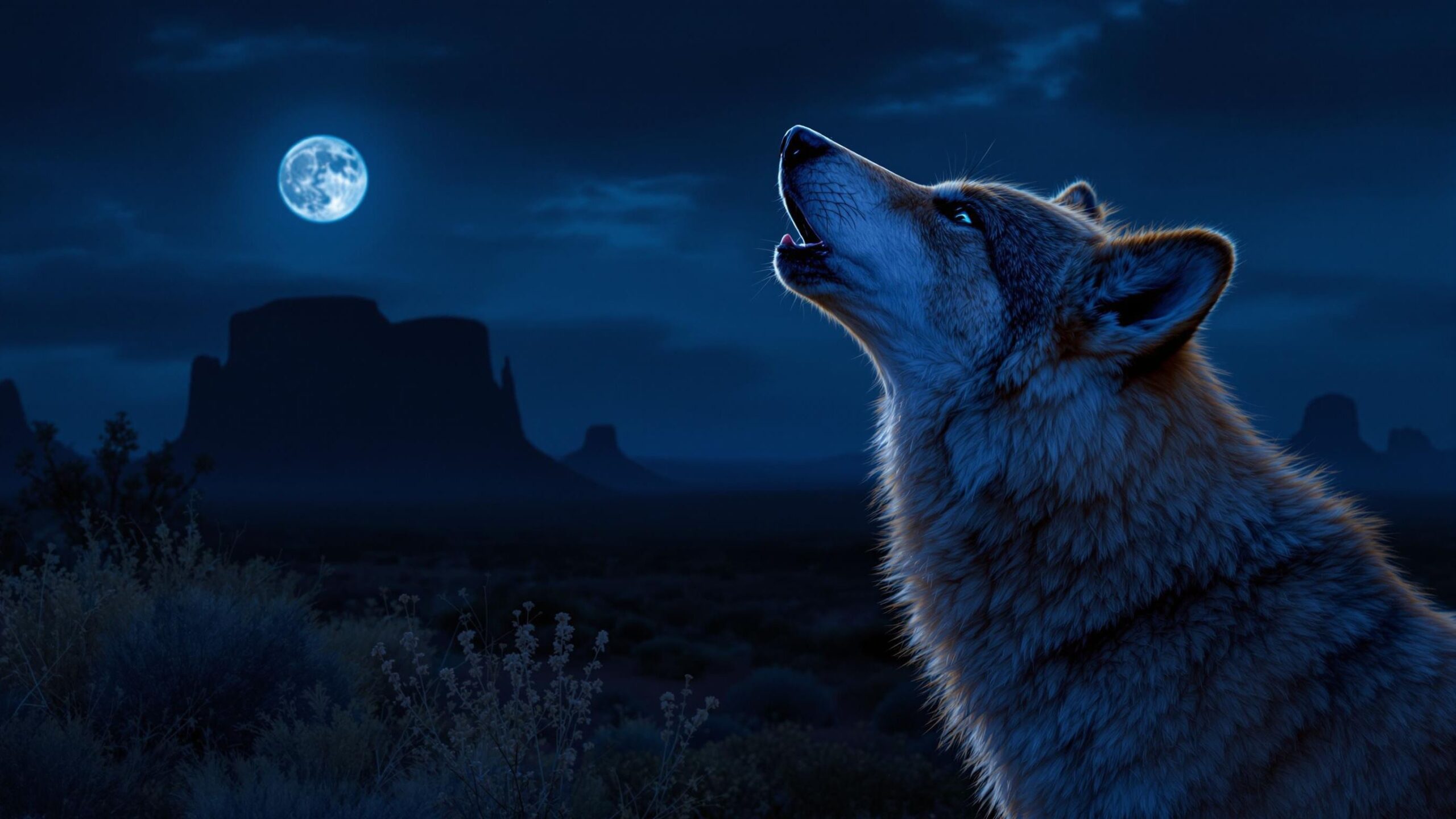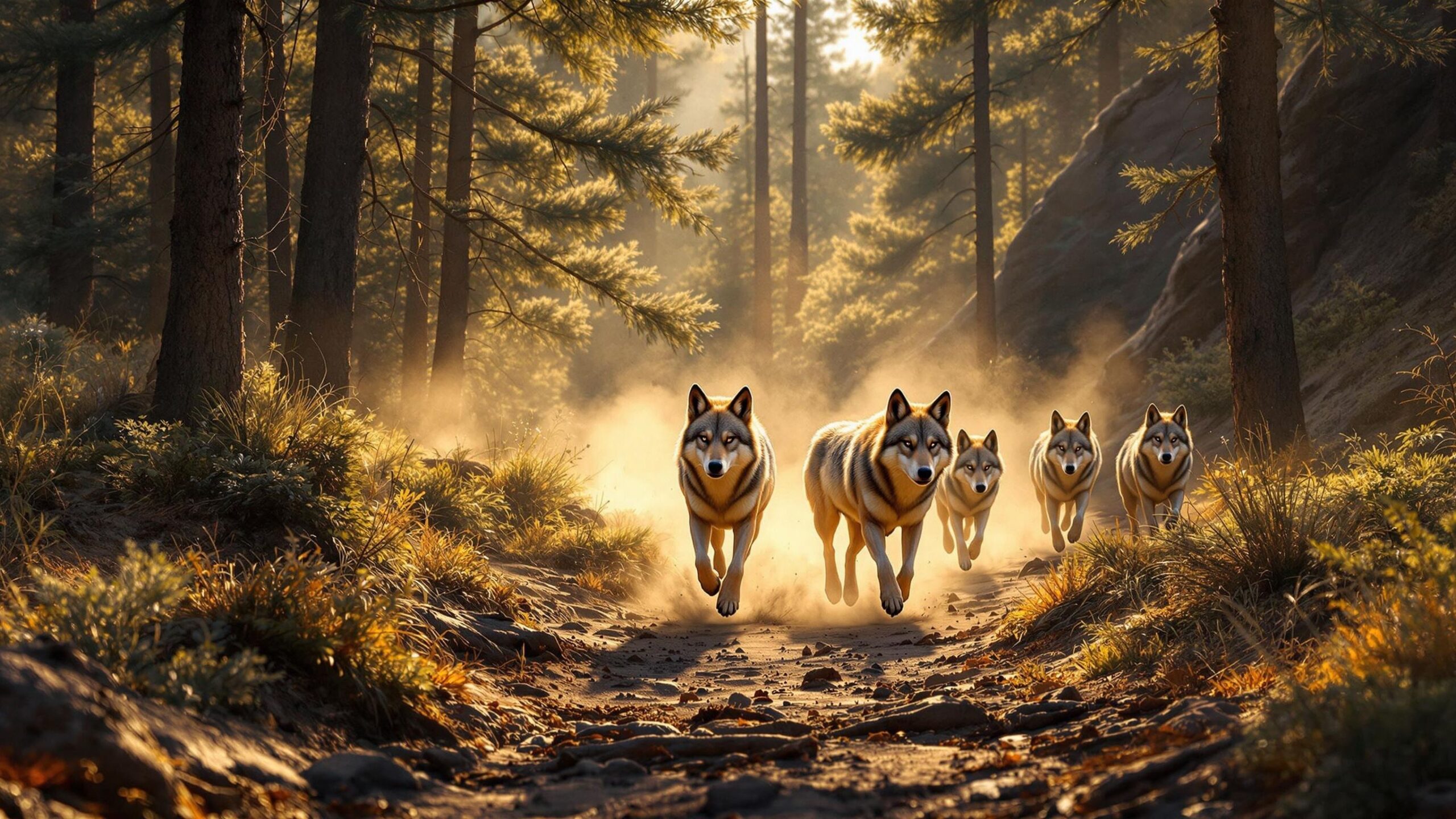The Mexican Wolf: A Legendary Comeback from the Brink
In the rugged mountain ranges and high desert plains of the American Southwest and northern Mexico, a once-vanished voice is beginning to howl again. Known for its striking features and tragic history, the Mexican wolf (Canis lupus baileyi) is one of the most fascinating and imperiled subspecies of the gray wolf. Often called el lobo, this animal is not only North America’s rarest gray wolf but also a symbol of ecological resilience and the power of recovery.
From the myths of ancient cultures to the frontlines of modern conservation, the story of the Mexican wolf is one of drama, decline, and determination. It is the story of a predator perfectly suited for the dry landscapes of the Southwest, unjustly eradicated by fear and misunderstanding, and painstakingly brought back through the efforts of scientists, conservationists, and communities. In this comprehensive guide, we explore the biology, behavior, habitat, and history of the Mexican wolf, and we glimpse the future of a species once declared extinct in the wild. Join us as we uncover the journey of this elusive desert wolf, whose survival is as inspiring as the landscapes it calls home.
A Wolf Apart: Origins and Identity
The Mexican wolf is a distinct subspecies of the gray wolf, native to the mountainous regions of southeastern Arizona, southwestern New Mexico, western Texas, and across the border into northern Mexico. Genetically and physically unique, it is the smallest and most genetically distinct of all North American gray wolves.
Scientific studies suggest that the Mexican wolf has been evolving in its southern range for thousands of years. Its adaptations to arid terrain and sparse prey availability make it distinct from its northern cousins in size, color, and behavior. Officially classified as Canis lupus baileyi, the Mexican wolf is named after Vernon Bailey, the American naturalist who first collected specimens in the early 20th century.
Smaller than most gray wolves, Mexican wolves typically weigh between 50 to 85 pounds and measure about 4.5 to 5.5 feet in length, including the tail. Their coats feature a stunning blend of gray, tan, black, and rust, perfectly suited to the brushy landscapes and piñon-juniper woodlands of the American Southwest. Their eyes, often a piercing yellow or amber, hint at the intelligence and intensity that have helped them survive centuries of persecution.
Family Ties: Social Behavior and Pack Life
Like all wolves, the Mexican wolf is highly social, living in family groups known as packs. A typical pack includes a dominant pair and their offspring from one or more years. These wolves live according to a cooperative social system, where hunting, raising pups, and defending territory are shared responsibilities. Each pack operates with a defined hierarchy, with the alpha male and female leading. They are typically the only breeding pair, and they form long-lasting monogamous bonds. Reproduction occurs once a year, usually in late winter, with pups born in April or May. A litter generally consists of four to six pups, born in a den and nursed for the first several weeks of life.
Raising pups in the Mexican wolf pack is a communal effort. Older siblings and other pack members help feed and protect the young, ensuring a greater chance of survival in harsh environments. Communication is vital in this tight-knit society, and wolves use howls, body language, and scent marking to maintain bonds, signal danger, and establish territory. Wolves have long been misunderstood as aggressive or domineering, but research shows that their social behavior is rooted in cooperation, care, and teamwork. The Mexican wolf, in particular, relies on these strong familial bonds to thrive in its challenging homeland.
Life on the Hunt: Diet and Survival
As apex predators, Mexican wolves play a critical role in maintaining healthy ecosystems by keeping prey populations in check. Their diet consists primarily of large ungulates such as elk, mule deer, and white-tailed deer. In areas with fewer wild prey, they may also consume smaller mammals like jackrabbits, rodents, and javelinas. Mexican wolves hunt primarily by sight and scent, often traveling miles each day across rugged terrain. They are endurance hunters rather than sprinters, relying on teamwork and persistence to wear down prey. In packs, they can take down animals many times their size, using coordinated strategies to isolate and overwhelm weaker individuals in a herd.
After a successful hunt, the pack feeds together, typically with alphas eating first. Wolves can consume up to 20 pounds of meat in a single meal but often go days without food, adapting to the feast-or-famine rhythm of the wild. The hunting behavior of the Mexican wolf is essential not just for the survival of the pack but for the balance of the ecosystem. By removing sick and old animals, wolves help maintain the health of prey populations and reduce overgrazing of vegetation. Their presence indirectly supports a wider range of species, from birds to insects, in what ecologists call a trophic cascade.

Desert Dwellers: Habitat and Range
Historically, Mexican wolves roamed a wide swath of territory from central Mexico into the southwestern United States. These wolves thrived in diverse habitats, including scrub forests, grasslands, oak woodlands, and mountain ranges. Adapted to warmer, drier climates than their northern counterparts, they developed behaviors suited to the sparse and challenging environment of the desert. Today, the Mexican wolf’s wild range is far more limited. Following their extirpation from the wild in the 20th century, their habitat has slowly begun to recover through reintroduction programs. Presently, Mexican wolves are found in the Blue Range Wolf Recovery Area, which spans eastern Arizona and western New Mexico, as well as protected areas in the Sierra Madre Occidental of northern Mexico.
These areas offer the rugged terrain and low human population density needed for wolves to establish territories and breed. However, their range is still constrained by roads, development, and livestock operations. The availability of prey and space to roam remains a limiting factor in the growth of wild populations. Despite these constraints, the wild Mexican wolf population is gradually increasing, thanks to ongoing conservation efforts. From just seven remaining individuals in the 1970s, captive breeding and careful reintroduction have grown the population to more than 250 in the wild as of the mid-2020s—a remarkable comeback by any standard.
A History of Conflict: Humans and El Lobo
The relationship between humans and the Mexican wolf is a story marked by conflict, misunderstanding, and slow reconciliation. In the late 1800s and early 1900s, as settlers moved westward and livestock ranching expanded, wolves were seen as a major threat to sheep and cattle. Bounties were placed on their heads, and the government sanctioned widespread eradication programs using poison, traps, and guns. By the 1970s, the Mexican wolf was virtually extinct in the wild. The few individuals that survived were captured for breeding programs in a desperate bid to save the subspecies. In 1976, the U.S. Fish and Wildlife Service listed the Mexican wolf as endangered under the Endangered Species Act, marking a turning point in its fate.
Over the decades, reintroduction efforts have faced strong resistance from some ranchers and local communities. Concerns about livestock predation, economic impact, and federal oversight have fueled debate. But others have welcomed the return of the lobo, seeing it as a restoration of the natural heritage of the Southwest. To help ease tensions, programs have been introduced to compensate ranchers for livestock losses attributed to wolves and to promote coexistence through non-lethal deterrents. Education campaigns, community outreach, and collaborative wildlife management have also improved understanding and support for wolf recovery.
Guardians of the Ecosystem: Ecological Role
The ecological importance of the Mexican wolf cannot be overstated. As apex predators, they regulate prey populations, encourage healthy behavior in deer and elk herds, and promote biodiversity across the landscape. Their presence can restore balance in ecosystems where prey had previously grown unchecked, leading to habitat degradation.
Wolves also influence the behavior of prey animals by creating a “landscape of fear.” This changes where and how herbivores graze, which can allow plant life to recover in overbrowsed areas. These changes ripple outward, benefiting birds, insects, and other wildlife.
Scientific studies in Yellowstone and other rewilding zones have demonstrated the profound effects of wolf reintroduction on ecosystem function. While the specific dynamics vary by region, the Mexican wolf serves a similar ecological purpose in the Southwest, and its continued presence is vital for the long-term health of desert and mountain ecosystems.
Cultural Legacy: Myth and Meaning
Wolves have long held a special place in the mythologies and cultural histories of Indigenous peoples across the Americas. For many Native American tribes, the wolf is a symbol of loyalty, intelligence, and strength. It is often revered as a spiritual guide, a hunter’s companion, and a guardian of the wilderness.
In Mexico, el lobo has inspired folklore, art, and oral tradition, often appearing as a clever and noble figure. Even in Spanish colonial tales, the wolf carries an air of mystery and wildness that sets it apart from other animals.
In more recent decades, the Mexican wolf has become an icon for conservationists, symbolizing both the tragedy of species loss and the hope of renewal. Its haunting howl, once silenced across the Southwest, now echoes again through canyons and mesas—reminding us that nature can rebound if given the chance.

The Road Ahead: Hope and Uncertainty
The story of the Mexican wolf is far from over. While much progress has been made, challenges remain. Habitat fragmentation, political opposition, illegal killings, and genetic bottlenecks still threaten the species’ long-term survival. Many wolves released into the wild struggle to find territory, suitable mates, or safe corridors between protected areas. However, the successes of the captive breeding program and recent increases in wild populations are reasons for optimism. The coordinated efforts of government agencies, conservation groups, Indigenous communities, and private landowners are slowly turning the tide.
Public awareness is also growing. As people learn more about wolves and their role in the environment, fear is giving way to fascination. The Mexican wolf’s comeback shows what is possible when science, policy, and compassion work together. In an era of ecological uncertainty, the Mexican wolf offers a powerful story of resilience. It reminds us that extinction is not always final—that even species driven to the brink can be brought back with effort, patience, and respect.
Return of the Howl
The Mexican wolf is more than just a predator. It is a living symbol of wilderness, a steward of balance, and a reflection of our own relationship with nature. Its journey from extinction in the wild to recovery across the American Southwest is one of the greatest conservation success stories of our time, even as the work continues.
In the high deserts and pine-cloaked mountains where it once vanished, the howl of the Mexican wolf now rises once more—echoing through time, across borders, and into the hearts of those who believe in wild places and second chances.

